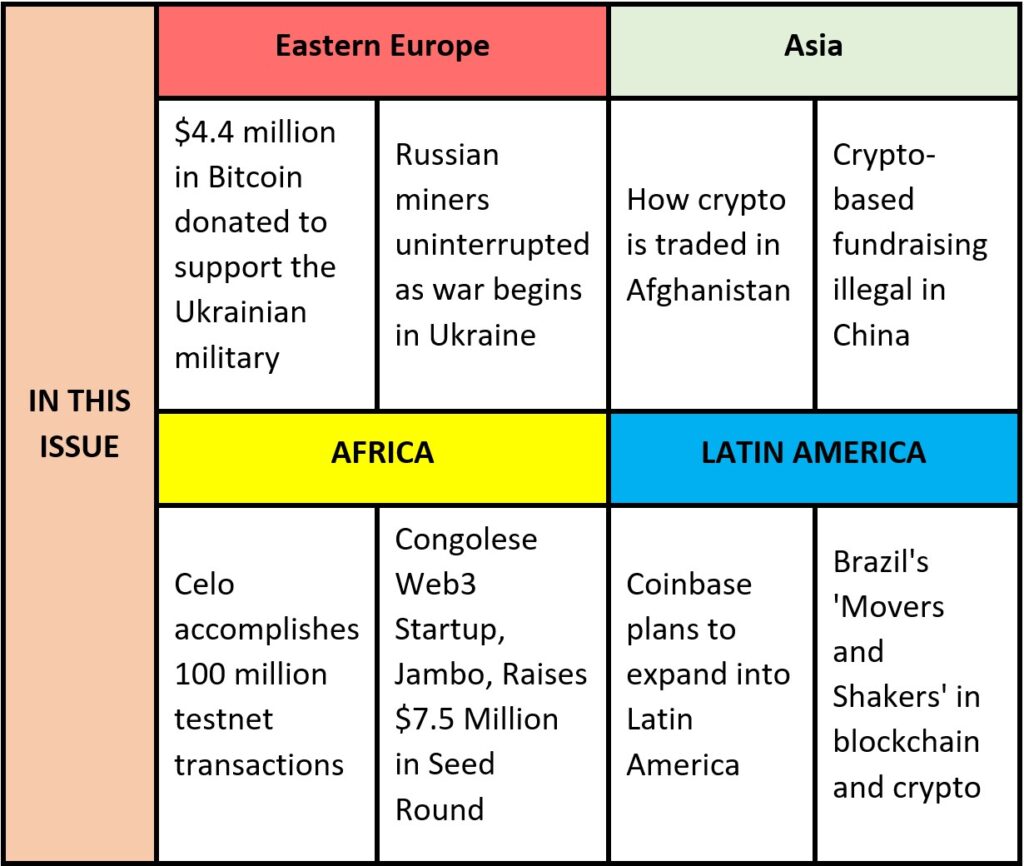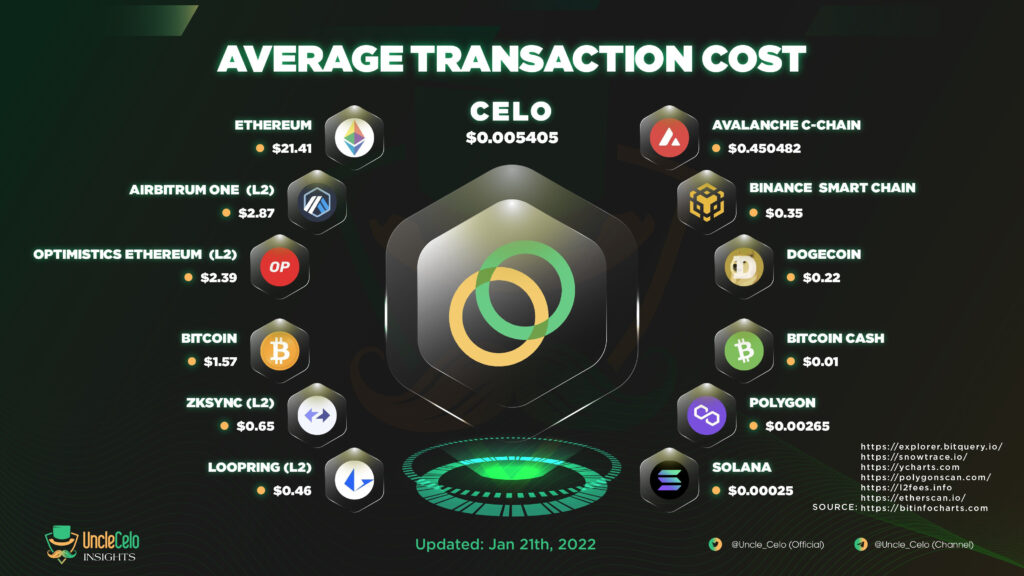Image Credit: @celo_esp via Twitter
Celo accomplishes 100 million testnet transactions and 95 million mainnet transactions
The mobile-first blockchain focused on emerging markets, Celo, revealed last week that it’s testnet recorded a 100 million transactions milestone and it’s mainnet recorded 95 million transactions. Quite the accomplishment for the blockchain whose on a mission to provide access to financial services to anyone without or limited access by introducing crypto transactions to billions of smartphone users. In addition, it’s one of the most affordable blockchains available with an average transaction cost $0.005405. Average transaction costs for Ethereum and Bitcoin are roughly $21.41 and $1.57 respectively. Polygon and Solana’s transaction costs are lower at $0.00265 and $0.00025 respectively. The Celo ecosystem includes a decentralized, proof-of-stake blockchain technology stack (Celo Platform), a native asset (CELO), stable coins (e.g. cUSD and cEUR), and the Celo Foundation’s Alliance for Prosperity, with over 130 organizations around the world participating. (Read on EmergingCrypto.io; Read on BitKE)
Congolese Web3 Startup, Jambo, Raises $7.5 Million in Seed Round
The three month old African Web3 superapp, Jambo, announced on Twitter that they raised $7.5 million in a seed round to fund operations, help support its objective of connecting millions of African users to the world’s Web3 applications, and test its app to be a one-stop-shop app for services like ride-hailing, banking, communication and food delivery. Co-Founder and CEO, James Zhang, told CoinDesk that the company’s first goal is to provide education to young Africans about Web3 and the financial opportunities it offers. One of their target audiences is university students and since January the company reported to have already signed up over 12,000 students across 15 countries for a Web3 curriculum. Jambo is exploring to introduce a play-to-earn revenue sharing model similar to Axie Infinity’s model and they’re testing 10 games to be released in the next couple of months, providing Africans with new income-generating opportunities. Per Zhang, “[Anything] that helps in Africa – send money, save money, make money – is what we’re testing off of the super app.“ (Read on EmergingCrypto.io; Read of BitKE) |






